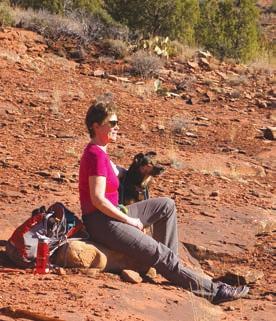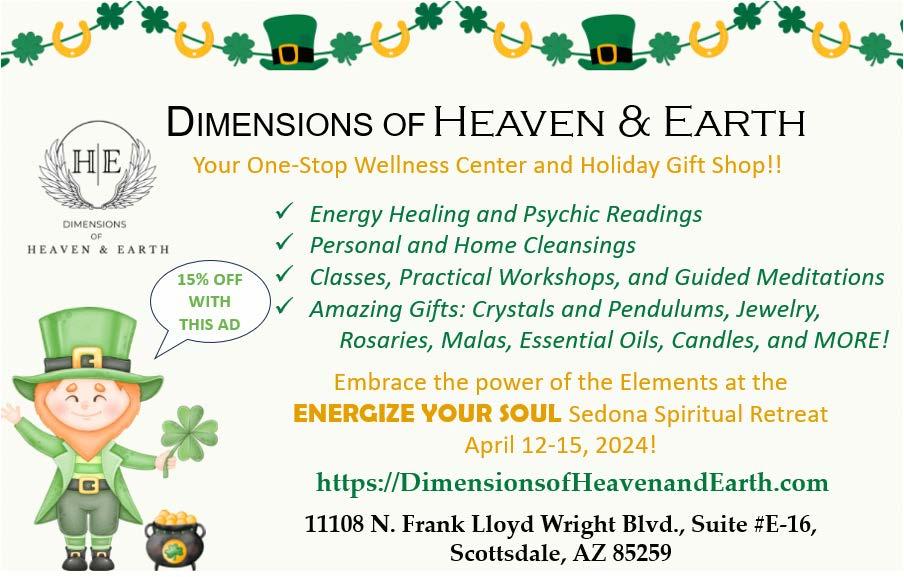






 HIDEYUKI TOKIGAWA
HIDEYUKI TOKIGAWA
 NARRATED BY MICHAEL BUBLÉ
NARRATED BY MICHAEL BUBLÉ
"Like so many families, I have been deeply affected by Alzheimer's, so I was thrilled to become a part of this film when I realized that there's hope, and it's not just a death sentence."- Michael Bublé


Dr. Dale Bredesen
BONUS Q&A, ONLY ON KNOWEWELL.COM, WITH Dr. Dale Bredesen
New York Times
Bestselling author of The End of Alzheimer’s



Therasage is the gold standard for energy healing, naturally healing infrared, negative ions and eliminating EMFs.
Therasage.com
Scan to register for educational webcast to learn more.


Sensiband is the simple, affordable, at-home self-test for metal allergies before joint replacement surgery.
Sensiband.com
Scan to register for educational webcast to learn more.


Founded in 1932, Boiron, the world leader in homeopathic medicines, is best known for its popular Arnicare® line of pain relievers and Oscillococcinum® flu reliever.
BoironUSA.com
Save 20% with code NA20


Now available on KnoWEwell.com.

OB/GYN-formulated with DHEA and Alpine Rose Stem Cells. Rejuvenates vaginal tissue, restores natural moisture, and helps prevent bladder leaks.
DrAnnaCabeca.com/ products/julva

















Publisher
Tracy Patterson, BSc, MES
Design & Production Vegetorium, LLC
Copy Editor
Sara Gurgen, MS
Digital Platforms
Hass Solutions
Locable
Natural Awakenings – Phoenix 3260 N Hayden Rd, Ste #210 Scottsdale, AZ 85251
Tracy@NaturalAZ.com
NaturalAZ.com
CEO
Kimberly B. Whittle
National Editor Sandra Yeyati
Editor Brooke Goode
Copy Editor/Proofing
Melanie Rankin
Layout
Flip180 Media
Cover image
Billion Photos/CanvaPro
© 2024 by Natural Awakenings. All rights reserved. Although some parts of this publication may be reproduced and reprinted, we require that prior permission be obtained in writing. Natural Awakenings is a free publication distributed locally and is supported by our advertisers. Please call to find a location near you or if you would like copies placed at your business. We do not necessarily endorse the views expressed in the articles and advertisements, nor are we responsible for the products and services advertised. Check with a healthcare professional regarding the appropriate use of any treatment.


I love the forest, and so naturally the Eco Tip in this month’s edition, on page 13, caught my attention. A coniferous forest—pine, fir, spruce—complemented with a mountain home, rounds out one of my favorites places to be.
There is nothing like being in a forest—the feeling of wilderness and yet tranquility at the same time. If I’m lucky, I get to see a deer, coyote, squirrel or one of many varieties of birds. And I always keep an eye out for bear, moose and mountain lion in areas where I know they reside.
The sounds of birds singing and the breeze whispering through the crowns of the trees is incredibly calming. Interestingly, this whispering sound is called psithurism (pronounced sith-err-iz-um), from the Greek word psithuros, which means whispering. And apparently, naturalists also favor the pine when it comes to this soothing sound. The famous naturalist John Muir wrote that pines “are mighty waving golden-rods, ever in tune, singing and writing wind music all their long century lives” (Wonderopolis.org/wonder/what-is-psithurism).
It’s not just the pleasing sounds that emanate from the pine forest, it’s the intoxicating scents. In the summer, the heavy warmth of the sap and bark intermingled with the needles produces the most heavenly fragrance—definitely one of my favs. I always think of it as being in the same category as summer horse sweat (this is kind of “inside” information for those of us who love horses and can relate). There’s another forest olfactory phenomenon as well—the winter aroma of pine needles mixed with cold air and snow. Wow, for me, there is no scent that is fresher and cleaner than this one!
I love placing my palm on a big, old pine tree, or a rock, and feeling the connection with nature. Or stepping out of the forest into a mountain meadow with a vast view and brisk wind, and wandering through the meadow to the other side and back into the depths of the forest.
As the article indicates, forests are vital to life on Earth, and for me, there is no other place like the forested mountain environment to gain strength and become centered and grounded.


Please note that all deadlines (advertising and editorial) are the 10th of the month prior to the edition being published. For example, March 10 is the deadline for all April edition submissions.

A study in the journal BMJ Oncology reports a sizable global rise in cancers among adults under 50, with the highest rates found in North America, Australia and Western Europe. Between 1990 and 2019, the incidence of early-onset cancer increased by 79.1 percent, and early-onset cancer deaths rose by 27.7 percent. Of the 29 cancers included in the analysis, nasopharyngeal and prostate cancers showed the fastest upward trend, whereas early-onset liver cancer exhibited the sharpest decrease. In the U.S., early-onset cancer rates rose 12.8 percent, while the incidence rate of individuals 50 and older declined.
Although the exact reasons for this alarming trend have not yet been identified, the researchers pointed to the following likely culprits as the main causes: dietary risk factors, including eating excessive red meat and sodium and not enough fruits and vegetables; alcohol consumption; and tobacco use.

Treating children with irritable bowel syndrome (IBS) can be complex, and parents are looking for complementary and alternative therapies. A paper published in the journal Nutrients evaluated studies regarding the effect of herbal remedies and spices in youngsters with this painful disorder.
The researchers found that iberogast, or STW-5, an herbal remedy containing licorice, peppermint and chamomile, improved symptoms in children with functional gastrointestinal disorders including IBS, and that peppermint oil reduced the severity, duration and frequency of IBS pain. Peppermint oil’s primary benefit in IBS seems to be its anti-spasmodic effect, although more research is needed to understand its impact on the gut microbiome of pediatric IBS patients. Psyllium was also found to offer effective, short-term relief in children with IBS, but further studies are needed.
Although not yet studied for childhood IBS, remedies found to provide IBS symptom relief for adults are curcumin, the active component of the turmeric spice; fennel in combination with curcumin; and artichoke leaf extract.



The global insect population is estimated to be declining at a rate of up to 2 percent per year due to a combination of climate change, habitat loss, pesticide use and human activity. That decline includes pollinators such as bees, butterflies, moths, beetles and wasps. Almost 90 percent of flowering plants depend entirely, or in part, on animal pollination.
According to a study published in the journal New Phytologist, researchers in France have found that wildflowers in a meadow near Paris have increasingly adapted to self-fertilization. They compared pansies grown from seeds harvested from 1992 to 2001 to pansies grown today, specifically examining their genetic and physical differences, and evaluating which pansies bumblebees preferred.
Finding that today’s pansies are smaller, make less nectar and are less attractive to bumblebees, the scientists concluded that the flowers had increased self-pollination by 27 percent. While this rapid adaptation may be a win for the flowers, it could exacerbate the decline in insects, which are a major food source for other animals and are integral to natural decomposition processes. The scientists believe there is an urgent need to further investigate this pattern and to evaluate the possibility of reversing the process.


www.EckankarArizona.org

The maritime shipping industry contributes around 3 percent of the world’s annual greenhouse gas emissions, and industry leaders are exploring ways to reduce their carbon footprint and save money. One promising innovation is the addition of specialized sails to cargo ships. In a collaboration between Cargill, BAR Technologies, Mitsubishi Corporation and Yara Marine Technologies, a cargo ship was retrofitted with cutting-edge rectangular sails called WindWings that tower nearly 123 feet. By harnessing wind power, the developers hope to save 30 percent in fuel expenditures.
Unlike traditional canvas sails, WindWings are comprised of rigid mechanical panels that rotate and spin based on computer instructions designed to maximize wind usage. The wings fold down to permit the ship to pass under bridges and allow for loading and unloading of cargo. This is one of many steps being taken by the maritime shipping industry to reduce emissions by 50 percent by 2050.


A renewable-energy project in the Brazilian state of Bahia is threatening the Lear’s Macaw, a large, blue-feathered parrot with bright yellow rings around its eyes which, according to American Bird Conservancy, has been brought back from extinction in the past but is still considered endangered, with approximately 1,300 adults in existence.
French-based Voltalia is currently building two wind farms that are expected to produce 99.4 megawatts of power in Bahia. The 28 wind-turbine towers that have already been erected over shrubland and thorn forests are located in the daily flight path of the Lear’s Macaw, between where they roost and feed. It is believed that the birds are fatally crashing into the turbines, and that the risk of collision increases at night, even though the turbines have been painted to be more visible.
Ecologists point out that the towers could be moved 100 kilometers away from the Lear’s Macaw habitat to preserve their population while generating the same amount of renewable power. Although construction continues, a Brazilian judge has ordered an environmental impact assessment that considers the welfare of these colorful parrots. Around the world, wind energy projects grew by 9 percent in 2022, according to the latest report from the Global Wind Energy Council, with China, the U.S., Brazil, Germany and Sweden leading with new installations.


Storing energy from renewable power sources such as solar and wind remains a challenge. The use of large battery packs is expensive; relies on nonrenewable, environmentally problematic minerals like lithium; and comes with inherent safety risks. California-based Antora Energy is investigating ways to store energy inside insulated boxes of extremely hot rocks. The technology is based on blast furnaces that use massive towers of stacked bricks to absorb wasted heat to provide energy.

Antora’s innovation uses solar electricity to heat blocks of carbon to almost 3,000° Fahrenheit, preserving it for later use. The stored thermal energy can then be delivered to customers as electricity or on-demand industrial-process heat. Antora’s use of hot carbon solves the unreliability of providing 24/7 zero-carbon power solely with solar and wind energies, which vary depending on the weather. Notably, the rocks are not heated by burning coal or gas but by capturing sunlight with thousands of photovoltaic solar panels.
Company leaders assert that this technology is compact and modular, making it flexible enough to be configured to fit different needs, and manufacturers will not have to wait for grid connections and upgrades. Whether this technology can be scaled to meet the growing demand remains to be seen.


Spanning more than 31 percent of our planet’s land, forests produce clean air and fresh water, offer a home to a multitude of plants and animals, and sequester enormous amounts of carbon from the atmosphere. And yet, human activity threatens these natural settings with deforestation, climate change and illegal logging. Here are actions we can take in celebration of International Day of Forests on March 21 and every day to ensure the future of our woodlands.
Support sustainable forestry. When purchasing wood, paper and other forest products, look for those that come from sustainably managed forests or are certified by reputable organizations like the Forest Stewardship Council (fsc.org) or BM TRADA (bmtrada.com)
Plant trees. Get those hands dirty and participate in tree planting initiatives with organizations such as the Arbor Day Foundation (ArborDay.org).
Reduce, reuse and recycle. Opt for recycled and eco-friendly products that lessen the demand for new products that may contribute to deforestation. Remember to recycle paper products to conserve valuable forest resources.
Go digital. Embrace digital solutions that minimize the need for paper. Store important documents electronically, read e-books instead of printed ones and consider digital alternatives before printing something.
Back sustainable livelihoods. Many communities depend on forests for their livelihoods. Encourage fair trade practices that support sustainable, forest-based industries, such as those promoting non-timber forest
products like honey, nuts, mushrooms, palm oil and maple syrup.
Engage in advocacy. Join local or global organizations dedicated to forest preservation and conservation such as the Rainforest Alliance (Rainforest-Alliance.org), The Nature Conservancy (Nature.org), Sierra Club (SierraClub.org) or Trees Forever (TreesForever.org). Each voice helps shape policies and promotes sustainable practices on a larger scale.
Educate others. Share knowledge about the importance of forests and their challenges. Organize workshops, give talks or simply have conversations with friends and family to raise awareness and inspire action.
Practice responsible tourism. When exploring forested areas, minimize the impact by following designated trails, respecting wildlife habitats, refraining from touching or feeding wild animals and taking trash home.
Support forest restoration initiatives. The Global Restoration Initiative (GRI) works with governments, businesses and communities worldwide to restore degraded forests and bring back life to these vital ecosystems. Consider supporting GRI (wri. org/initiatives/global-restoration-initiative) or local initiatives like American Forests (AmericanForests.org), Pennsylvania Parks & Forest Foundation (PAParksAndForests. org) and Tree Folks (TreeFolks.org) through donations or volunteer work.


The Starlight House—an avantgarde sanctuary for light, sound and vibrational medicine—has opened in Paradise Valley. Guided by Kim Roach, an alternative healing and yoga aficionado with more than 25 years of practice and study, The Starlight House offers a transformative experience that blends ancient principles with cuttingedge technologies.
“Through The Starlight House, we've established a sacred space where individuals can embark on a journey of profound self-
discovery, connecting with their higher s elves through light, sound and vibrational medicine,” says Roach, founder of the wholistic sanctuary.
Crafted by Roach, The Starlight House specializes in sessions designed to assist clients in opening their third eye, cultivating intuition and connecting with their higher selves. These carefully designed sessions aim to stimulate and decalcify the pineal gland (also known as “the seat of the soul”), using brain entrainment to induce a theta state for self-healing.

The Starlight House incorporates innovative Bio-Well scans, which are said to reveal personal energy fields to assess stress, energy flow and chakra balance. The studio also provides Bach flower remedy consultations, which are believed to foster emotional regulation and self-healing by transforming negative attitudes into positive ones.
Going beyond individual sessions, The Starlight House offers personalized private retreats, mini-retreats, workshops and monthly sound healing ceremonies. These experiences, featuring vibe sessions, Bio-Well readings, private sound ceremonies, and hot and cold therapies, provide a holistic approach to well-being.
Roach envisions The Starlight House as a haven for those navigating life transitions, seeking stress management or desiring deeper connections. The studio's community events, held under the stars, foster connections and reset the nervous system.
The Starlight House aims to collaborate with local luxury spas and hotels, envisioning partnerships as an outside service or vendor for spa services. Special offerings include discounted rates at preferred partner hotels for mini-retreat participants.
“As awareness grows about the transformative power of sound therapies, frequencies and brainwave entrainment, The Starlight House stands as a pioneering space where ancient wisdom meets modern healing,” adds Roach.
For more information, visit FeelTheFrequency.com.

When people hear the word chiropractic, they think of a bad back or painful neck. What they may not know is that a bad neck can lead to heart disease, asthma, headaches and anxiety, while low back issues can lead to infertility, prostate issues, erectile dysfunction, constipation and irritable bowel syndrome.
Page four of Gray’s Anatomy states every function of the human body is under the control of the nervous system. What houses and protects the nervous system is the spine. If there is even a feather’s weight on a nerve, from bone misalignment caused by a degenerative disc, the function of the organ connected to that location in the nervous system is decreased by 50 percent. That’s
when diseases, like heart disease, and other health conditions develop.
In my office, I take X-rays to analyze where there are misalignments, what nerves are being affected, what organs are building disease, and how I should correct the misalignment, help the disc heal, and stop arthritic changes.
There are three phases of degeneration that I look for. Phase one is misalignment of the structure, which can be a straight neck or a rotated pelvis/hip. If this is left uncorrected, it degenerates into phase two. That is when degenerative disc disease and arthritic spurs develop. If this is left uncorrected, it degenerates into phase three—a more chronic condition—when the vertebrae are fused
together, the nerve is starting to atrophy, and the person is probably experiencing declining health and on medications.
What I do is corrective care, and how I create a care plan is by analyzing the phase of degeneration and what organs are being affected. I have several techniques I use as well as therapies in the office. It’s definitely not a quick fix, but it is life changing!
Dr. Roxane Zamora, of Imagine Wellness Chiropractic Center, began her career as a psychotherapist and saw the trend was more about pharmacology than it was psychology. In 2000, she returned to school at Palmer Chiropractic College. She is renowned for her comprehensive approach to patient wellness and her dedicated commitment to providing cutting-edge chiropractic care. With a deep-seated passion for helping individuals achieve optimal health, Zamora has been transforming lives in her community for more than a decade. Zamora believes in a patient-centered approach that addresses not just the symptoms, but the underlying causes of discomfort and imbalance. For more information, call 623582-8951 or visit ImagineWellnessChiropractic.com. See ad, page 17.
Few factors are as important to overall wellness as our diet. Besides taste and nutritional value, food preferences are influenced by convenience, availability, cost and personal values. Trends are shifting away from fad diets to more balanced eating, as people across generations are focused on living healthier well into their golden years. Equally as urgent is a demand for more sustainable products and manufacturing practices as consumers become increasingly aware of the impact their food choices have on the planet.
Dr. Melinda Ring is the executive director of the Osher Center for Integrative Health at Northwestern University, in Chicago. As a leading center for integrative medicine, their team helps patients achieve optimal health through innovative, whole-person care. Ring says that personalized nutrition, plant-forward diets and longevity protocols are overtaking older trends like low-carbohydrate or high-fat fads.
“In recent years, there’s been a movement away from highly restrictive diets toward
more balanced, sustainable eating patterns that emphasize whole foods over highly processed alternatives,” says Ring. “Interest in local food sources is growing, driven by concerns about sustainability and food quality. While the pandemic highlighted concerns about access to healthy food for all, busy lifestyles continue to make convenience a key factor influencing food choices.”
Ring cites nutritional psychiatry as a burgeoning field. “Emerging research suggests a link between diet and mental health, with diets rich in fruits, vegetables and omega-3 fatty acids potentially benefiting mood and cognitive function,” she explains. Ring adds that there is an increasing focus on incorporating protein for overall health, as well as personalized nutrition, in which advances in genomics and biotechnology are used to tailor dietary recommendations to individual genetic, lifestyle and health factors.
Frances Largeman-Roth, RDN, is a New York Times bestselling author and nationally recognized health expert. Her latest book, Everyday Snack Tray, outlines fun, flavorful and nutrient-dense charcuterie boards for every

occasion. She asserts that members of Generation Z—those born in the late 1990s and early 2000s—are driving many of the current shifts in food and beverage choices.
“The sober movement is rapidly gaining momentum, with an influx of mocktails, nonalcoholic beer and zero-proof wines on the market,” she explains. “People in their 30s and older are realizing that alcohol interrupts their sleep and are looking for other ways to relax at night. They’re also moving away from caffeine, which has a long half-life, so while the body may feel tired at night, the brain is still triggered. Fast-casual restaurants and cafes have increased their selection of fruitforward, caffeine-free drinks, and a new all-natural brew called figgee, made from ground figs, is emerging online.”
Zoomers tend to be more conscious of the connection between their food decisions and impacts on the planet, which explains why they are more likely to choose and demand sustainably grown and packaged products. “This generation is drawn to brands that have carbon buy-back programs or help sequester nitrogen in their manufacturing,” says Largeman-Roth. “While we’ve seen an influx of meat alternatives in the past, there’s starting to be a pushback against the ones with long ingredient lists that are highly processed. Rubi protein made from lemna, or duckweed [a free-floating, aquatic plant], is gaining popularity as a plant-based protein alternative. It contains nine essential amino acids and uses 10 times less water to grow than soybeans and 100 times less water than beef. And, people are turning to the root system of mushrooms, instead of the caps, as a higher protein source. Their versatility makes them ideal for nuggets, jerky and other substantial snacks.”
Consumers are looking for foods that can help regulate blood sugar, especially as more of the population is concerned about prediabetes. “People are continuing to choose nuts, beans and other high-protein boosts to refuel after a workout or in-between meals,” Largeman-Roth points out. “Products such as Good Measure bars, made of almonds,


peanuts and pumpkin seeds, are emerging as nutrient-rich and satisfying snacks. Consumers also realize how important fiber is for gut optimization, skin quality and mental health. Perhaps most top-of-mind in a postpandemic world, it’s vital for immune health, as well. Overall, people of all ages want products that make them feel better and fit into their lifestyle. A lot of boxes have to be checked for people to try a new product, and food manufacturers are stepping up.”
generation, members of Generation X— Americans born between 1965 and 1980— are pioneering a new approach to healthy aging to help them thrive in their diverse lifestyles. According to the global market research company Mintel, aging concerns that were once considered taboo, such as menopause, are now being openly discussed.
“The new focus for our aging society will be an extended healthspan—the period of life spent in good health,” says Mintel Principal Analyst Jolene Ng. “This is an important
Perhaps taking a cue from the younger shift, as population aging is a defining global trend of our time. By 2030, one in six people in the world will be aged 60 years and older, according to the World Health Organization. Brands need to consider the various nutritional, physical and mental health needs for middle-aged and older adults. Opportunities to improve healthspan include maintaining
brain function with age and functional health solutions for common problems like disrupted sleep.”
Increasingly, Gen Xers aged 44 to 58 prioritize sleep as a tool for improving overall physical and emotional health. “Research has shown that total sleep time, sleep efficiency and deep sleep decrease with age,” says Ng. “Brands are focusing on innovating products with nutrients such as fiber or botanicals like lavender that can improve sleep quality. Products such as Bardo’s Calm snacks, which contain lemon balm and thyme, are emerging as a snack option for Gen Xers who are interested in trying food that supports relaxation.”
Priceless lifetime, life-changing whole health bene ts for less than the cost of a smoothie a week!

Many consumers are part of the “sandwich generation”, a term used to describe people in their 30s or 40s that are raising children while also caring for aging parents. Ng notes that brands are adjusting product lineups and marketing campaigns to address the specific requirements of these families. She expects to see more services like Magic Kitchen, which, she explains, is “a meal kit service that offers a range of healthy, dietitian-designed meals for families with different health needs, including seniors. Their objective is to bring families together during dinnertime, while respecting the specific dietary needs of individuals within the family unit. Brands also can help ease the stress and strain on these compound caregivers by offering convenience products and helpful tools for themselves and the loved ones they care for.”
Historically, food and beverages have been a source of great pleasure and social interaction, and Mintel Food & Drink Director David Faulkner envisions this as a continuing trend. “Just as we saw during COVID-19, food and drink will be the go-to source of comfort for consumers, delivering precious moments of joy,” he says. “It will be all the more relevant during the worsening climate crisis for food and drink companies to position pleasurable products as necessities, not as guilty self-indulgences.”
Carrie Jackson is a Chicago-based freelance writer and frequent contributor to Natural Awakenings. Connect at CarrieJacksonWrites.com.



The human body enables us to fulfill daily functions and perform unseen feats autonomically. Our hearts beat 100,000 times a day, and our 60,000 miles of blood vessels transport nutrition and oxygen to our tissues and organs so they can do their superhero jobs.
Taking time to eat better, exercise and get more rest feels like a tall order when life keeps us busy, but when we see food, movement and intention as sacred choices instead of Herculean tasks to be postponed, investing in our health can become a joyous endeavor.
Appreciating our arms, legs, eyesight, tastebuds and all of our other amazing physical assets can be a daily spiritual practice that incentivizes us to maintain our corporeal foundation. Research shows that moments of gratitude are catalysts for improvements in the nervous system, including vagal nerve tone, which positively impacts heart rate and blood pressure. For those struggling with chronic pain or illness, gratitude for what they can do gives them a greater sense of control and uncovers blessings they might have overlooked while dwelling upon limitations.
While millions of cells in the body die every day, millions more take their place. We are walking wonders of physiological orchestration, and this alone deserves our highest respect and commitment to our well-being. Here are a few inspirations for the journey.
• With a daily prayer, thank the body for its wonders and efforts. Be specific by
acknowledging distinct areas like the heart, brain and skin, as well as different functions such as breathing, hearing and seeing.
• Think of the gym, treadmill, yoga studio or hiking trail as sacred spaces.
• Consider better food choices as divine offerings to the body’s temple.
• Make the act of food shopping a mindful activity.
• Tune into the body for five-to-10-minute intervals to acknowledge its beauty and accomplishments.
• Please the senses with nontoxic aromas, soft organic fabrics and splashes of beauty.
• Befriend any body part that is disliked or has been ignored.
Marlaina Donato is a body-mind-spirit author, visionary artist and composer. Connect at BluefireStudio.art.







Growing herbs at home has myriad benefits, enhancing health, boosting flavor and saving money while supporting local ecosystems. Home growing not only provides fresh herbs for cooking needs, but also offers access to easy and affordable natural remedies that can soothe common ailments.
“There is nothing like having your own fresh herbs in home-cooked meals. You can also dry and prep your own herbs for winter. Herbs retain more fragrance and vibrant color when you dry and process your own,” says Nadine Clopton, an herbalist who serves as regenerative education program manager for Rodale Institute.
Clopton likes to grow medicinal herbs like holy basil, as well as culinary herbs like rosemary, sage, thyme, oregano and basil, which serve as both nutrition and medicine. “They have minerals, vitamins and antioxidants, and are deeply supportive of different systems in the body,” says Clopton, who maintains a small deck herb garden in her Bethlehem, Pennsylvania, apartment.
A home herb garden boasts multiple environmental benefits, reducing our carbon footprint by eliminating the miles most herbs travel to reach the local grocery store, and eliminating pesticide use, if grown organically. Herbs are also great for attracting pollinators like bees, birds and butterflies to support a balanced and healthy ecosystem.
“Rosemary is a multifaceted herb high in calcium,” says Linda Conroy, an herbalist, farmer and herb educator in Albion, Wisconsin. She uses it in topical lotions for pain relief, makes rosemary-infused salt for a flavor-booster and incorporates this pungent herb into her homemade feta cheese. Rosemary has been shown to enhance cognition and memory. It is also a
natural mosquito repellant, making it a great addition to summer patios.
Sage is known for its anti-inflammatory properties and as a natural treatment for sore throats and coughs. “This easy-to-grow perennial also helps attract pollinators,” says Conroy.
Dandelion is an excellent detoxifier that can help cleanse the liver and promote healthy digestion. “Every part of the dandelion is edible; it’s really a powerful, supportive herb. There are so many herbs like dandelion that grow wild around us, asking for our awareness and acknowledgment,” Clopton remarks.
Thyme has powerful antimicrobial properties that can help fend off bacterial infections. “It’s also anti-spasmodic and a natural expectorant, making it an excellent addition to cough remedies, which can save money compared to over-the-counter treatments,” Conroy advises.


Lemon balm is a natural stress reducer that can help reduce anxiety and promote relaxation. “I love growing lemon balm and holy basil together,” says Clopton. “They act like a natural mosquito repellent, in addition to all their medicinal and culinary benefits.”
Chamomile is an essential herb for relaxation and digestion. Regular consumption of chamomile tea can help reduce anxiety and promote restful sleep. Conroy also uses this herb for topical applications like lotions, body washes, foot baths and even eyewashes to soothe sore, irritated eyes.
Garlic has antibacterial and antiviral properties that can help fight infections. The bulb is also known to reduce blood pressure
and lower cholesterol levels. “Garlic, chives and other plants in the allium family are all important immune-system boosters,” says Conroy.
For first-time growers, an herb garden may sound intimidating, but with patience and care, it can flourish even in small, indoor spaces. Conroy recommends trying chives, as they are easy to sprout and thrive in a box or pot. She also suggests starting by growing just one herb at a time.
While Conroy grows her herbs from seed in her own greenhouse, it is perfectly acceptable to buy plants that already have a head start. Clopton suggests plants like lemon balm because it is easy to root from a cutting. She also recommends supplementing soil with organic compost to give plants an extra boost, and making sure growing containers have good drainage.
Adding herbs to an outdoor garden or indoor space is an easy way to shrink our carbon footprint and support pollinators for the good of the planet, all the while saving on groceries. Start small with an herb garden and enjoy the numerous health and other benefits herbs offer.
April Thompson is a Washington, D.C., freelance writer covering food, travel, sustainability and spirituality topics. Learn more at AprilWrites.com.

This herbal infusion contains essential vitamins and minerals, including vitamins A, B, C and E, potassium, calcium, zinc and iron. A longer steep time maximizes the vitamins and minerals extracted from the herbs. This tea offers a great way to add some additional nourishment to the day.
YIELD: 1 CUP
Nettles
Milky oats or oatstraw (avena sativa)
Spearmint or peppermint
Red clover flowers
Red raspberry leaves
Combine equal parts of the organic dried herbs in a bowl. To make a cup of nourishing tea, use 1 tablespoon of the herb mixture per 8 ounces of hot water and steep covered for 15 minutes. For a more concentrated herbal infusion, steep for a few hours or overnight.
Recipe courtesy of Nadine Clopton. Before consuming any herbal remedies, consult with a doctor or pharmacist for possible interactions with prescription medications or preexisting health conditions.

This tea includes a class of herbs referred to in herbalism as nervines, which work to support and nourish the nervous system and relieve anxiety. While sipping this elegant infusion, visualize the herbs gently smoothing over any frayed nerves with a cleansing wave of calm.
YIELD: 1 CUP
Lemon balm
Tulsi (holy basil)
Milky oats or oatstraw (avena sativa)
Chamomile
Lavender
Rose petals
Combine equal parts of the organic dried herbs in a bowl. To make a cup of soothing tea, use 1 tablespoon of the herb mixture per 8 ounces of hot water. Steep covered for 10 minutes.
Recipe courtesy of Nadine Clopton. Before consuming any herbal remedies, consult with a doctor or pharmacist for possible interactions with prescription medications or preexisting health conditions.
YIELD: 4 SERVINGS
1 onion, sliced thin
3 medium tomatoes, chopped
1 Tbsp ghee
¼ tsp salt
¼ tsp dried, powdered turmeric
¼ tsp black pepper
¼ tsp paprika
5-8 eggs
Cilantro as garnish
Sauté onions and tomatoes in ghee until soft. Add in spices and adjust to taste. Crack 5 to 8 eggs, add them to the sauté and cover. Wait until the yolk and whites are almost set and stir. Garnish with fresh cilantro.
Copyright © 2017 Madiha M. Saeed, from her book The Holistic Rx: Your Guide to Healing Chronic Inflammation and Disease, published by Rowman & Littlefield. All rights reserved.



Awell-known Chinese proverb says, “The flapping of the wings of a butterfly can be felt on the other side of the world,” poetically reminding us that small actions can produce large effects. When it comes to the world’s disappearing pollinators, the modest steps we take today can generate life-saving results tomorrow.
According to the U.S. Fish and Wildlife Service (FWS), “Pollinators provide vital benefits to people and wildlife, keeping animals and plants that we depend on thriving while bringing us food and supporting the economy.” Almost 90 percent of flowering plants depend entirely or in part on animal pollination, and yet, the FWS reports that pollinator populations are on the decline. One way to support these important species is to create a pollinator corridor—a pesticide-free, native-plant zone that provides food and shelter for indigenous pollinators.
While the word pollinator may conjure up images of butterflies and bees, the category is much broader and includes birds, bats, lizards, moths, flies, beetles, wasps and some small mammals. “Virtually every ecosystem on Earth that contains flowering plants depends on animal pollinators,” says Kim Eierman, author of The Pollinator Victory Garden: Win the War on Pollinator Decline with Ecological Gardening. “Many are keystone species in the ecosystems where they occur. If a keystone species becomes extinct or vanishes, that ecosystem fundamentally changes, and not for the better.”
From apples, melons and potatoes to almonds, coffee and cocoa, the food we eat is not available without pollination. Losing just one pollinator can have a significant impact. Without bees, fruit and nut trees produce fewer and smaller crops, if any. Of the top 100 edible flowering crops, 80 are pollinated by honeybees.

“Every ecosystem is dependent on pollinators to maintain healthy environmental balances in global food webs,” explains Jen McDonald, the founder of Garden Girls, a Houston-based company that designs and installs home landscapes. “Pollinators don’t make food just for us, but also for livestock and virtually all other living things. Many plants that require pollination are also needed for shade habitats for birds, insects and small animals.”
The decline in pollinators is attributed to a loss of feeding and nesting habitats that occurs when native plants are replaced by non-native grasses, farmlands and urban landscapes. Pesticides, chemicals, parasites, non-native species, new diseases and climate change are also modern-day threats. Monarch butterflies are considered vulnerable to extinction. Nearly one in four bees (347 native species) are at increased risk of extinction. More than half of the 154 North American bat species are at severe risk of population decline.
The good news is that when native plants are re-introduced, pollinators return. “Abundant, diverse pollinators ensure fertile, resilient landscapes and secure food systems for communities, and backyard gardens can restore numbers that strengthen regional plant reproduction,” says Kiersten Rankel, a botanist for Greg, an app that helps people optimize their plant-growing efforts.
To get started, select a strip of land, rooftop, wall or yard that supports pollinators, including their migration, foraging and overwintering. Next, pick native and flowering plant species for the space. Perennials require less maintenance, as they come back each year. Start small. Even a few potted
plants or a converted curb strip can have a big impact. Avoid using pesticides and herbicides. Beyond flowers, be sure to also include shrubs, twigs, rotting logs, branches, vines, ground cover and bare gravel. Determine if it is helpful or harmful to remove leaves from the ground in the fall and reduce or eliminate mowing practices, especially on roadsides or curbs.
To make a bigger impact, talk with neighbors and community members to create a larger corridor. Consider working with local schools, colleges, nature-focused nonprofits, government officials that oversee parks and city planning, nurseries and farmers. The more people that are involved and invested in the corridor, the higher the odds of its continuing success.
Create a map to see the full footprint of the corridor; fill any gaps and remove invasive plant species. Include a wide diversity of native plants to serve pollinators at each stage of their life cycles. The Wild Seed Project suggests having at least 10 pollinator-friendly plants to support them year-round with continuous blooms and shelter.
An example of a giant pollinator corridor is Project Wingspan, located in the Midwest and Great Lakes region. The people behind this program are striving to create 18,000 acres of high-quality habitat to support local wildlife and pollinators. On a smaller scale, the town of Orleans, Massachusetts, is working to ensure their entire community is pollinator friendly.
There has never been a better time to start or join a pollinator corridor. Those efforts could be the flap of a butterfly’s wing that changes the future for these vital creatures.
Kelcie Ottoes is a content writer for sustainable businesses, specializing in blog posts, case studies and white papers.
Multiple studies report that an active lifestyle offers mental and physical benefits, as well as a longer healthspan. Workout strategies and fitness equipment are continually evolving to meet changing consumer interests, incorporate scientific discoveries and take advantage of technological advancements. Here is a look at the latest emerging trends in fitness.
Connected fitness equipment that replicates the gym experience at home with online programs led by professional trainers has experienced a downturn in sales since the end of the pandemic. Lululemon Studio Mirror went out of business and Peloton has lost 40 percent of its value. The financial struggles for connected fitness are expected to

continue in 2024 as consumers seek inperson connections in the post-pandemic world. The International Health, Racquet and Sportsclub Association’s annual member survey reports a rise in gym and studio memberships and revenue across low-cost, luxury and boutique facilities; this upswing is expected to continue.
Wearable devices that track workouts, steps and active minutes, and use biosensors to monitor health data like heart rate, blood pressure and sleep patterns continue to be popular as their functionality expands. Enhancements to popular devices include Apple Watch’s ability to identify abnormal heart rhythms; Fitbit’s improved accuracy of health and fitness monitoring and storage software; and NADIX Activewear’s capability to tell if yoga moves are being performed properly.
Tech companies are expected to continue to improve the accuracy of their sensors, technology and connectivity, as wearables are part of a broader trend toward datadriven training. Real-time statistics like heart rate, velocity and speed can help individuals monitor the effort and intensity of workouts and help coaches tailor programs to each client, even in group settings. Companies like Meta and Les Mills are also expanding virtual reality for workout applications, allowing users to visit surreal locations for real fitness results without leaving home.
A combination of aerobic exercise, strength training and diet can improve metabolic function, reduce body fat and increase the chances of maintaining a healthy weight. A new class of drugs called glucagon-likepeptide 1 (GLP-1) agonists, such as Ozempic and Trulicity, which have been used to treat Type 2 diabetes, also lead to weight loss and may improve heart health.
“This class of medications is not a replacement for exercise,” stresses Steven Masley, M.D., a physician, nutritionist and author of The 30-Day Heart Tune-Up. “The drugs’ mechanisms of actions are very different; they are dramatically more expensive; and they have occasional worrisome side effects—in contrast with exercise that has multiple health benefits. Exercise does not just enhance weight loss and blood sugar control, it also improves brain function, helps you with sleep, reduces stress, strengthens bones, improves intestinal function and improves mood. For those taking GLP-1 medications, the best results will occur when they are combined with exercise.”
An emerging trend is the blurring of lines between health clinics and fitness centers. Some medical offices are adding personal trainers to their teams in order to complement the work of doctors and nurses, while fitness centers are acquiring or developing their own clinics to prescribe weight-loss drugs, hormone replacement protocols, integrative therapies and infrared sauna sessions. One such example is Life Time Fitness’ flagship health club in Minneapolis.
Strength, or resistance, training continues to grow in popularity, especially among Generation Z-ers that love to post photos of their fit selves on social media and appreciate the science-based benefits, including muscle
building, cardiovascular improvements, increased bone density, reduced body fat and stabilized joints.
A study of more than 400,000 people published in the British Journal of Sports Medicine found that those regularly practicing strength training along with aerobic exercise had a lower risk of death than those that performed only aerobic training. Another analysis from the same journal suggested that regular strength training was associated with a 10 to 17 percent lower risk of cardiovascular disease, diabetes, lung cancer and overall mortality.
In response to this emerging trend, Nike has developed a new line of strength training equipment; Pure Barre launched Define, a low-impact class that incorporates heavier weights; and Orangetheory Fitness expanded its workout offerings to include strength training.
Some companies recognize the benefits of offering employees access to fitness facilities and health education classes, which lower insurance costs and increase productivity and mental health. If changes advocated by an American College of Sports Medicine task force come to fruition, billings for services by fitness professionals would be covered by insurance.
In a Lyra Health survey of U.S. corporate employee benefit leaders, 95 percent of respondents said that mental health benefits are very important to prospective employees. Regular physical activity and exercise can boost mood and improve mental health, and individuals are increasingly recognizing their worth.
Kimberly Whittle is the founder and CEO of KnoWEwell, P.B.C. and the CEO of Natural Awakenings Publishing Corporation.



In the United States, colorectal cancer is one of the most common types of cancer. According to the American Cancer Society, the disease is expected to precipitate approximately 53,000 deaths in 2024, and incidence rates for people under 55 have been increasing by 1 to 2 percent each year. Regular screenings and lifestyle improvements, including a healthy diet and regular exercise, can decrease the risk.
“The gut is the root and the foundation of health,” says Vincent Pedre, M.D., a boardcertified internist specializing in functional medicine and the bestselling author of The GutSMART Protocol. In addition to dramatically improving overall health, his protocol incorporates science-backed lifestyle modifications that have been shown to optimize
gut health and reduce the incidence of colorectal cancer.
Research has proven that chronic inflammation is highly correlated with the development of colorectal cancer. A functional medicine approach begins by easing inflammation and then taking steps to restore the population of healthy bacteria in the gut by replenishing nutrients, repairing the gut lining, rebalancing the body and managing stress.
Putting out the fire in the gut: The first step is to remove the possibly offending triggers of inflammation, beginning with gluten; grains; dairy; sugar; soy; nutrient-depleted foods containing artificial ingredients,
preservatives and additives; processed foods; genetically modified foods; and any ingredient for which there is a sensitivity. A practitioner can also test for and address chronic illnesses that may be impacting the gut such as hepatitis, Epstein-Barr and other viral and fungal infections.
Replenishing nutrients: To restore the vitamins, minerals, nutrients and other essential ingredients needed for proper digestion and absorption, it is important to incorporate more organic, whole foods in the diet, but that is not the full story. As Pedre explains, “There is not one right diet. If you eat foods that you cannot break down into little nutrients and absorb, then it doesn’t get broken down and tends to feed bad bugs that can grow inside of you. We really need to
Coming in April


think about whether our gut is capable of breaking down the foods we actually eat because that is really what determines whether the diet is right for you.”
In his book, Pedre offers a quiz that helps people determine their level of gut dysfunction. Alternatively, a practitioner can evaluate stomach acid and digestive enzyme levels to ensure that food is being broken down properly. “Digestive enzyme supplements can help pick up where your body might be falling short, breaking down your foods, making them more digestible,” explains Steven Wright, co-founder of the Healthy Gut Company. To help support the gut microbiome, Pedre recommends altering the diet to increase the number and quantity of vegetables and fermented foods such as sauerkraut and kimchi.
Restoring the balance of good bacteria in the gut: Crucial for colon and overall health is a robust population in the gut of probiotics (the good bacteria) and prebiotics (the food for probiotics). Fermented foods are excellent probiotic sources, while green, leafy vegetables and other high-fiber foods, as well as asparagus, carrots, garlic, leeks, raw onions, radishes and tomatoes, are some of the best prebiotics. If levels are insufficient with just food, probiotic and prebiotic supplementation may be necessary.
Repairing the gut lining: Our intestines are lined with millions of cells that create a tight barrier—the gut lining—which in essence determines what is absorbed into the bloodstream and what stays in the gut to eventually be eliminated. When the gut lining is not healthy, however, the barrier is not able to perform its job properly, allowing toxins and bacteria to leak into the body and preventing the system from properly absorbing nutrients. To repair the lining naturally, it is imperative to eat plenty of organic, whole foods that include zinc; vitamins A, C, D and E; omega-3 fatty acids; and selenium.
Rebalancing our lifestyle: “Slowing down when you eat and saying some prayers between bites is a real big deal,” Wright advises. “It allows your gut to make acid in your stomach and make enzymes work in your intestines.” He also recommends playing and spending time outdoors with our hands in the dirt and breathing in the smells and molecules that “tell our body that it is a normal environment.” Activities like gardening and yard work add diversity of microbes from the soil and will help to balance our microbiome.
Managing stress: “Stress is an attack on your gut, a self-induced attack,” Pedre notes. By incorporating coping techniques, exercise routines, consistent sleep patterns and time in nature, we help optimize gut healing and maintain the body’s well-being and balance.
Madiha Saeed is a holistic, functional and integrative doctor in Naperville, Illinois, and director of education for Documenting Hope and KnoWEwell.

More than two-thirds of children develop at least one ear infection by the time they are 3 years old, and a third of these kids experience three or more episodes. “Ear infections may be painful, can lead to complications and are stressful for the child and their parents,” says Andy Smith, a chiropractic doctor who treats adults and children in Denville, New Jersey. But as children grow, the structures in their ears enlarge, their immune systems strengthen and their risk of infections decreases, with most youngsters outgrowing ear infections by age 5.
The common ear infection, or acute otitis media (AOM), is caused by a buildup of mucus in the middle ear and is accompanied by pain, fever, redness, swelling and possibly discharge, as viewed through an otoscope by a pediatric provider. Mucus can develop from nasal congestion and cough associated with the common cold, as well as from inflammation caused by diet, allergens, smoke, mold and other environmental toxins.
Symptoms of an ear infection in babies and toddlers include tugging on their ears, irritability and fever. Older children may complain of ear pain that may worsen when lying down, have a fever or display irritability, clinginess, decreased activity, loss of appetite, dizziness, vomiting or difficulty hearing. AOM may be caused by bacteria or viruses. The American Academy of Pediatrics strongly urges pediatric providers to wait and watch before prescribing antibiotics for ear infections because they often clear on their own within two to three days.
Children may also develop fluid in the middle ear without signs of an infection, pain or fever. Middle-ear fluid can be chronic and may lead to hearing loss and speech delays. Symptoms can include complaints of difficulty hearing, lingering cough and nasal
congestion, or no symptoms at all. If a child is diagnosed with AOM and does not have pain or fever, parents should work with their pediatric provider to address the cause of the buildup of fluid rather than treat it with unnecessary antibiotics.

Ear infections may be prevented by avoiding foods that lead to inflammation and mucus development. Many parents report their child’s first ear infection between 1 and 2 years old when they switch from formula or breast milk to dairy, including milk, butter, yogurt, cheese and ice cream. Dairy may also be an ingredient in prepared or processed foods found at the grocery store. Dairy is associated with recurrent AOM because it causes mucus production in the body.
Frequent ear infections may also be caused by other food sensitivities or allergies to eggs, nuts, soy, corn or gluten, as well as exposure to environmental allergens. A child with recurring infections should consider a food elimination diet to identify the culprit. Avoiding exposure to tobacco smoke, wood burning stoves, scented detergents, shampoos, conditioners, body care products, candles, air fresheners and other artificially scented items can also decrease the risk of developing an ear infection and its symptoms.
Breastfed infants have a decreased risk of developing ear infections, according to a study in the journal Pediatrics. A healthy diet for a child or breastfeeding mom aids in optimal bowel function, which decreases the risk of mucus proliferation. Healing foods include organic, leafy greens and other vegetables; seasonal fruits; seeds; nuts; beans; seafood; seaweeds; whole grains; healing roots, such as turmeric and ginger; and plenty of water.
• Rest.
• Increase fluid intake, but avoid overly sugary drinks.
• Eat a healthy diet that includes warm, home-cooked meals that include garlic, onion, turmeric and ginger.
• Avoid dairy, processed foods and sugary, floury, cold and raw foods.
• Ear drops containing mullein or garlic oil assist in decreasing inflammation associated with AOM, unless there is discharge from the ear, which can indicate a ruptured eardrum. Breast milk can also be used as ear drops to decrease inflammation.
• Gentle massage with essential oils containing oregano or lavender to the outer ear and surrounding area assists in clearing mucus. However, never place these oils inside the ear.
• “Chiropractic care is often effective in decreasing the symptoms and removing the cause of AOM,” says Smith. “It enhances the brain-ear neurological control. A chiropractic treatment also improves cervical and thoracic lymphatic drainage, which allows the inner ear to properly drain.”
• Homeopathic remedies, such as belladonna, ferrum phosphate, pulsatilla, chamomilla and silica, may reduce symptoms. For optimal results, consult with a homeopath.
• Vitamins C and D, zinc and elderberry boost immune function and aid in fighting many infections. Check with a pediatric provider to determine the appropriate dosage for a child.
As a holistic pediatric nurse practitioner on Long Island, New York, Jennifer Zethner focuses on the root cause of chronic and acute childhood conditions.


Contrary to popular belief, snakes make excellent pets, providing the opportunity to connect with one of nature’s most enigmatic creatures. It can be both fun and calming to observe these scaly creatures up close as they navigate their terrarium-based habitats. Snakes are less demanding than dogs or cats because they do not require regular walks, consistent attention or even daily feeding.
Due to a slow metabolism, most adult snakes typically eat from once a week to every few weeks, depending on their species, age, size and health. Younger vipers may eat more often, while some large species may eat less frequently. Of course, as with any pet, prospective owners need to be prepared for the unique challenges and responsibilities of caring for their sinewy companion.
Mariah Healey, a reptile husbandry specialist and owner of the online database ReptiFiles. com, provides the following tips for selecting a healthy snake.
• The eyes should be bright and clear. Cloudy eyes might occasionally occur when the snake is about to shed, but persistent cloudiness or signs of discharge can indicate health issues.
• The nostrils should be clear of obstructions. Blocked nostrils can be a sign of respiratory infection or other health problems.
• Breathing should be silent. Noticeable noise, such as wheezing or crackling during breathing, can be symptoms of respiratory issues.
• The snake should be alert and flick its tongue as it is handled. This is their way of exploring and sensing their environment. A lack of flicking or lethargic demeanor can be evidence of an illness.
• The body should feel smooth and muscular. An overly bony or excessively plump body can be a cause for concern.

• Constricting snakes should wrap firmly around a person’s arm without being aggressive. This is indicative of healthy muscle function and strength.
• There should be no lumps, scars or open wounds. These might point to past or present problems. The skin should also be free of any patches of stuck shed, which can lead to health complications.
• The vent, or cloaca, should be clean and sealed flush with the rest of the belly. Any signs of swelling, discharge or protrusion can be an indication of internal health problems.
• No mites or other external parasites should be present. Mites are small and can often be seen around the eyes, mouth and under the scales, appearing as tiny black or red dots.
Healey cautions that each snake species has different needs, and owners should learn about their animal’s unique requirements, rather than relying on so-called starter kits. Some species thrive in a humid environment, while others prefer drier conditions.

Although many snakes eat rodents, some prefer birds, frogs or other reptiles. Some are active during the day, whereas others are nocturnal. Consult books, forums, breeders and websites about the snake to ensure proper care. Healey offers the following additional tips.
• Provide an enclosure that matches the snake’s length. Snakes can be deceptively large. Despite their slender build and ability to coil up, they require enclosures that enable them to stretch fully. This is supported by a study from England’s Bristol Veterinary School, which involved 744 snake owners and indicated that such setups lead to healthier and more enriched lives.
• Make the enclosure high enough. Most land-dwelling snakes do well with two feet of height, but species that spend a significant time in trees should have at least four feet of height to accommodate their natural climbing behavior.
• Keep track of temperature and humidity. Snakes require a carefully controlled environment with specific temperature and humidity needs and regular monitoring to maintain a safe environment.
• Feed them prey. Snakes typically eat rodents or birds. Handling dead animals may be off-putting to some people.
• Find a specialized healthcare provider. Identifying health problems in snakes can be challenging. Although they may be harder to find and more expensive than general veterinarians, a specialized snake vet is preferable.
• Commit to lifelong care. Owning a snake is a long-term undertaking, as some snake species can live for decades.
• Adjust to their lifestyle. While snakes can be fascinating to watch and care for, they typically do not enjoy being handled, and they do not form bonds with owners in the same way mammals do.
• Check the legal and ethical considerations. In some areas, owning certain species of snakes is regulated or even illegal and may have ethical and ecological implications. It is always best to check local statutes for guidance.
Ruth Roberts is an integrative veterinarian and holistic health coach for pets, as well as the creator of The Original CrockPet Diet. Learn more at DrRuthRoberts.com.

Connecting you to the leaders in natural healthcare and green living in our community. To find out how you can be included in the Business Directory email PhoenixAds@NaturalAZ.com to request our media kit.
MacKenzie Kalt, Owner/Director
4050 E Greenway Rd, Ste 5, Phoenix 480-594-5052
MyLeadingEdgeWellness.com

Providing some of the most advanced natural technologies for those struggling with chronic pain, injuries, stress, migraine headaches, PTSD, insomnia, Lyme disease, autoimmune disorders, skin conditions, and much more. Visit our website to learn more. See ad, inside front cover.
2701 N 7th St, Phoenix 602-307-0888
NaturalMedicineDetox.com

We offer a wide range of services that can help just about everyone at affordable prices. We also accept insurance for acupuncture, including Medicare. Please take a look at our website to learn about our services, gifted practitioners, and insurance information and form to see if your plan covers acupuncture. See ad, page 11.
Allura Westly
3611 E Sunnyside Dr, Phoenix AlluraWatercolor@cox.net
602-469-0524 • AlluraWaterColor.com

Allura Westly, master teacher, opens her sanctuary studio to all levels, beginner to advanced. Learn fluid color technique, drawing and composition. Small class of eight students. No talent required, just a desire to create.


Denise Cahill, CNC
16810 Avenue of the Fountains, Ste 114 Fountain Hills
480-477-8886
ModernWellnessScottsdale.com

Modern Wellness offers comprehensive biofeedback scans to test for imbalances within the body. The scan immediately identifies the root cause of any symptom or health condition along with specific remedies and customized action plans. A holistic approach to health is discovering and eliminating the root cause of any issue to truly heal.
Dr. Roxane Zamora, DC 822 E Union Hills Dr, Ste 22, Phoenix 623-582-8951
ImagineWellnessChiropractic.com/us

At Imagine Wellness Chiropractic Center, our mission is to provide chiropractic care to increase health, wellness and healing for you and your family. We are focused on corrective chiropractic care and offer nutritional consultations to bring your health to a whole new level! See testimonials on our website. See ad, page 17.
BENNETT’S CARPET & UPHOLSTERY CLEANING
Valleywide Service • 480-994-4988
BennettsCarpetCleaningAZ.com

Eco-friendly carpet and upholstery cleaning. Featuring organic cleaners and odor removal products derived from renewable seed and vegetable sources. No perfumes, solvents or other hazardous products. No phosphates. Products also available for in-home use. Licensed and owner operated since 1974. See ad, page 20.
5705 N Scottsdale Rd, Ste D-110, Scottsdale 480-948-0560
MillDental.com

Millennium Dental offers more than 44 years’ experience in holistic dentistry, including advanced general dentistry Certified by the IABDM. See ad, page 9.
Dr. Michael Margolis and Dr. Stephen Kovar 2045 S Vineyard Rd, Ste 153, Mesa 480-833-2232 • MyDentistAZ.com

A holistic and biological approach to your dental needs and overall health. Biocompatible dentistry, esthetic dentistry lumineers/ veneers, family dentistry and much more. See ad, page 3.
6930 E Chauncey Ln, Ste 100, Phoenix 602-775-5120 • MyNaturalDentist.com




The doctors at Natural Dental Partners take the time to listen to your concerns and use their extensive experience to help you achieve better health. Using the latest technology (such as low-dose 3D imaging, CEREC, lasers, PRF, ozone and treatment of sleep disorders), they believe in a team approach to help you achieve your healthcare goals. Check out MyNaturalDentist.com or ABreathOfHealth. com to see how they can help you. See ad, pages 5 and 21.
Melanie Icard, NMD
1430 E Missouri Ave, Ste B127, Phoenix 602-353-7712 • ButterflyHolistic.com

Dr. Icard specializes in biological medicine, peptides, PRP, aesthetics and ozone therapy. Her offerings include holistic anti-aging medicine, pain reversal, natural and traditional aesthetics, ozone therapy, holistic ketamine therapy, and sexual health regeneration. See ad, pages 11 and 29.
KIM CARTER, MA, HTCP
15215 S 48th St, Ste 154, Phoenix
Kim@IntuitiveKim.com
IntuitiveKim.com

Kim is an Intuitive and Healing Touch Certified Practitioner offering guidance when you feel out of alignment with your authentic self. Stress, fear, anxiety and grief/loss throw us off balance, making it challenging to access inner wisdom. Sessions include reading and clearing your energy field; and simple, practical selfhealing tools to keep you balanced and grounded. See ad, page 11.
MYSTICAL TRUTH
Taerie Gillan
928-707-2335
MysticalTruth.com

Psychic, medium, coaching and intuitive business advisory services. For 40 years, Taerie has helped people from all walks of life and around the world. As an Angel communicator, she works with the higher realms, offering empowerment, healing and peace from her sessions without compromising religious or spiritual beliefs.
931 E Southern Ave, Ste 106, Mesa 480-306-7321
RealignYourLifeAZ.com

Realign Your Life Wellness Center features the Harmonic Egg—sound and light therapy for physical, emotional and spiritual energy healing. Other services include The Body Code, Quantum Touch, sound baths and Higher Guidance Life Coaching. See ad, page 31.
Carmen Moretti, CMS-CHt, FIBH 8900 E Pinnacle Peak, Ste 200, Scottsdale 602-380-3631

Over the past 13 years, Carmen Moretti has helped people access that power within themselves to break free and heal from patterns of sadness, stress and overwhelm and live a life that they are proud of and that they love. See ad, page 12.
Ute Haahr, Integrative Nutrition Coach 480-206-0752
Ute@NutritionRevived.com
NutritionRevived.com

I help women with metabolic health issues balance their hormones, lose weight and reclaim their inner power. I specialize in helping women with involuntary childlessness through my integrative nutrition and mindset program. See ad, page 33.
NORTHWEST EXTERMINATING Organic Program Experts
623-516-2220
NWExterminating.com

We have organic alternatives available with multiple programs to meet your needs. Ask us about our year-round pest protection, SMART ecofriendly rodent control 24/7 home protection, and desert guard home sealing service. See ad, page 20.
ANDREA BRIGGS, AKA “CRITTER DOC”
ASAM, Sh Reiki, HTAP Communicator, Healer, Counselor 602-317-1543
1CritterDoc@gmail.com
SpiritAnimalWisdom.com

With a gentle healing touch, Andrea provides wellness counseling, energy healing, animal communication, and intuitive counsel for pets and their people.
KAYA HOLISTIC
6102 N 16th St, Phoenix 480-737-0867
KayaHolistic.com

Kaya Holistic is a lifestyle boutique that carries a curated selection of handcrafted, sustainable goods and botanical wellness products. From cultivators and formulators to makers and artisans, we are committed to supporting companies and industries that make a significant impact in our world through sustainable practices and conscious choices. See ad, page 12.

FENG SHUI REAL ESTATE
Jennie Richau
Associate Broker and Certified Feng Shui Consultant, Brokers Hub Realty
602-292-0622 • WooWooAgent.com

A unique and holistic way to buy or sell! Utilizing Feng Shui and various "woo woo" methods to find you a home where you will thrive or sell your home quickly, for the highest value. See ad, page 25.
HOLISTIC ENERGY ACADEMY
13291 W McDowell Rd, Ste E-1, Goodyear 623-935-0501
Tonya@HolisticEnergyAcademy.com
LavendarMoonStore.com

Make a Difference Doing What You Love! Become a Professional Holistic Health Energy Practitioner. Learn the most effective and comprehensive energy modality and techniques with proven results. Become trained in the body’s many energy systems; learn how to energy test, clear, restore, detect and correct energy imbalances. Levels I, II and III.
1538 E Southern Ave, Tempe 480-994-9244
Info@swiha.edu • swiha.edu

Nationally accredited college offers holistic health and wellness degrees, diplomas, certificates of excellence, continuing education and personal development, oncampus and online. Financial aid available. See ad, outside back cover.
11108 N Frank Lloyd Wright Blvd, Ste E16 Scottsdale 732-832-1036
DimensionsOfHeavenAndEarth.com

Dimensions of Heaven and Earth is Scottsdale’s exciting, new one-stop Spiritual Experience: a center of healing and insight combined with a store full of unique gifts from local artisans. With training and tools for your personal development, we are excited to help you take your spiritual journey to new levels! See ad, page 10.
ECKANKAR
The Path of Spiritual Freedom 1-877-300-4949 • EckankarArizona.org
Eckankar.org • HearHU.org
Facebook.com/EckankarArizona

Eckankar is an active, individual, creative spiritual practice. A companion and roadmap for your journey home—to the heights of Self-Discovery and GodDiscovery, and beyond. Come along and discover the most secret part of yourself. The key to spiritual freedom lies within you. Explore life as a Soul Adventure. See ad, page 11.
4105 N 20th St, Ste 115, Phoenix
480-442-5020
SummitLighthousePhoenix@gmail.com
SummitLighthousePhoenix.org

Dedicated to sharing Saint Germain’s Violet Flame. All faiths welcome. Learn how you can become a modern day mystic. We are dedicated to sharing the Teachings of the Ascended Masters® to help you bring in joy and peace to the world. Learn what the requirements are to make your ascension. See ad, page 33.


NOTE: Please check market websites and ArizonaCommunityFarmersMarkets.com for more information on days and hours, and any restrictions.
Ahwatukee Farmers Market
4700 E Warner Rd, Phoenix
Sundays Oct-May 9am-1pm
Jun-Sep 8am-11am
Facebook.com/AhwatukeeFarmersMarket
Care 1st Farmers Market
328 W Western Ave, Avondale
Tuesdays Jul-Oct 8am-noon
ArizonaCommunityFarmersMarkets.com
Carefree Farmers Market
1 Sundial Circle
Fridays Oct-May 9am-1pm
Jun-Sep 8am-11am
Facebook.com/CarefreeFarmersMarket
Downtown Chandler Farmers Market
3 S Arizona Ave
Saturdays Oct-May 9am-1pm
Jun-Sep 7am-10:30am
Facebook.com/ChandlerFarmersMarket
Downtown Mesa Farmers Market
1 E Main St
Saturdays 8am-noon
dtMesaFarmersMarket.com
Downtown Phoenix Farmers Market
721 N Central Ave
Saturdays Oct-Apr 8am-1pm
May-Sep 7am-11am
DowntownPhoenixFarmersMarket.org
Gilbert Farmers Market
222 N Ash St
Saturdays Oct-Mar/Apr 8am-noon
Apr/May-Sep 7-11am
GilbertMarket.com
High Street Farmers Market
5415 E High St, Phoenix
Sundays Oct-May 10am-1pm
Facebook.com/Farmers-Market-on-HighStreet-2244771575799425
Mommas Organic Market
Arrowhead Farmers Market
7780 W Arrowhead Towne Center, Glendale
Saturdays Oct-May 9am-1pm | Jun-Sep 8-11am
Facebook.com/Getlocalazfarmersmarkets GetLocalArizonaEvents.com
Mommas Organic Market
Glendale Farmers Market at Cabela’s 9380 W Glendale Ave, Glendale, AZ 85305
Sundays Sep-May 10am-2pm | closed for summer
Facebook.com/Getlocalazfarmersmarkets
GetLocalArizonaEvents.com
Old Town Scottsdale Farmers Market
3806 N Brown Ave
Saturdays 8am-1pm
ArizonaCommunityFarmersMarkets.com
Power Road Farmers Market
4011 S Power Rd, Mesa
Monday-Saturday 9am-5pm | Sunday 9am-4pm
PowerrdFarmersMarket.com
Roadrunner Park Farmers Market
3502 E Cactus Rd, Phoenix
Saturdays Oct-May 8am-1pm | Jun-Sep 7-11am
Facebook.com/RoadrunnerParkFarmersMarket
Singh Meadows Farmers Market
1490 E Weber Dr
Fridays, Saturdays & Sundays 8am-2pm
Facebook.com/SinghFarms


Sun City Farmers Market
16820 N 99th Ave
Thursdays Oct-May 9am-1pm
Facebook.com/Sun-City-Farmers-Market631299790224049
The Capitol Farmers Market 1700 Adams St, Phoenix
Thursdays 10:30am-1:30pm
ArizonaCommunityFarmersMarkets.com
Uptown Farmers Market
5757 N Central Ave, Phoenix
Wednesdays Oct-Apr 9am-1pm & May-Jun 8am-noon
Saturdays Nov-Apr 9am-1pm & May-Oct 8am-noon
UptownMarketAZ.com
Verrado Community Farmers Market
N Market Pl & W Main St, Buckeye
Sundays Oct-Jun 9am-1pm
Facebook.com/VerradoCommunityFarmersMarket
Farmers Market in Old Town Square
1042 N Main St, Cottonwood
Wednesdays 4-8pm (check months/times throughout year)
Facebook.com/FarmersMarketatOldTownSquare
Flagstaff Community Farmers Market
211 W Aspen Ave, City Hall Parking Lot
Sundays May-Oct 8am-noon
FlagstaffMarket.com
Prescott Farmers Market
Dignity Health, YRMC
900 Iron Springs Rd, Miller Valley Lot
Saturdays 7:30am-noon
PrescottFarmersMarket.org
Sedona Community Farmers Market
Wells Fargo Bank Parking Lot
2201 W State Rte 89A, West Sedona
Sundays May 14-Oct 15 8am-noon | Sundays Nov 5-Apr 28 11am-3pm
Sedona-Farmers-Market.com
Verde Valley Farmers Market
Hollamon St and Main St, Camp Verde
Saturdays May-Oct 8-11am
Facebook.com/VerdeValleyFarmersMarket
Windmill Park Farmers Market
9950 E Cornville Rd, Cornville
Thursdays 2-6pm (check months/times throughout year)
Facebook.com/WindmillParkFarmersMarket






